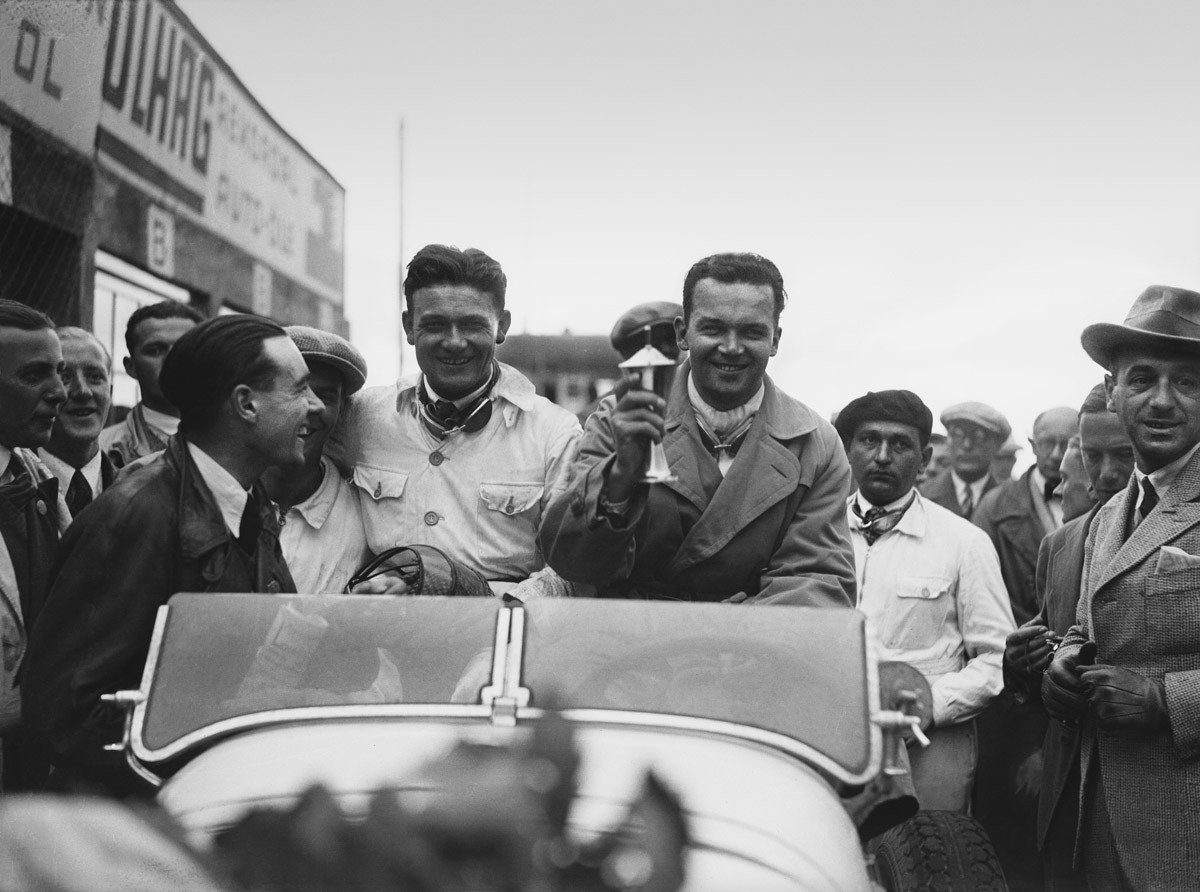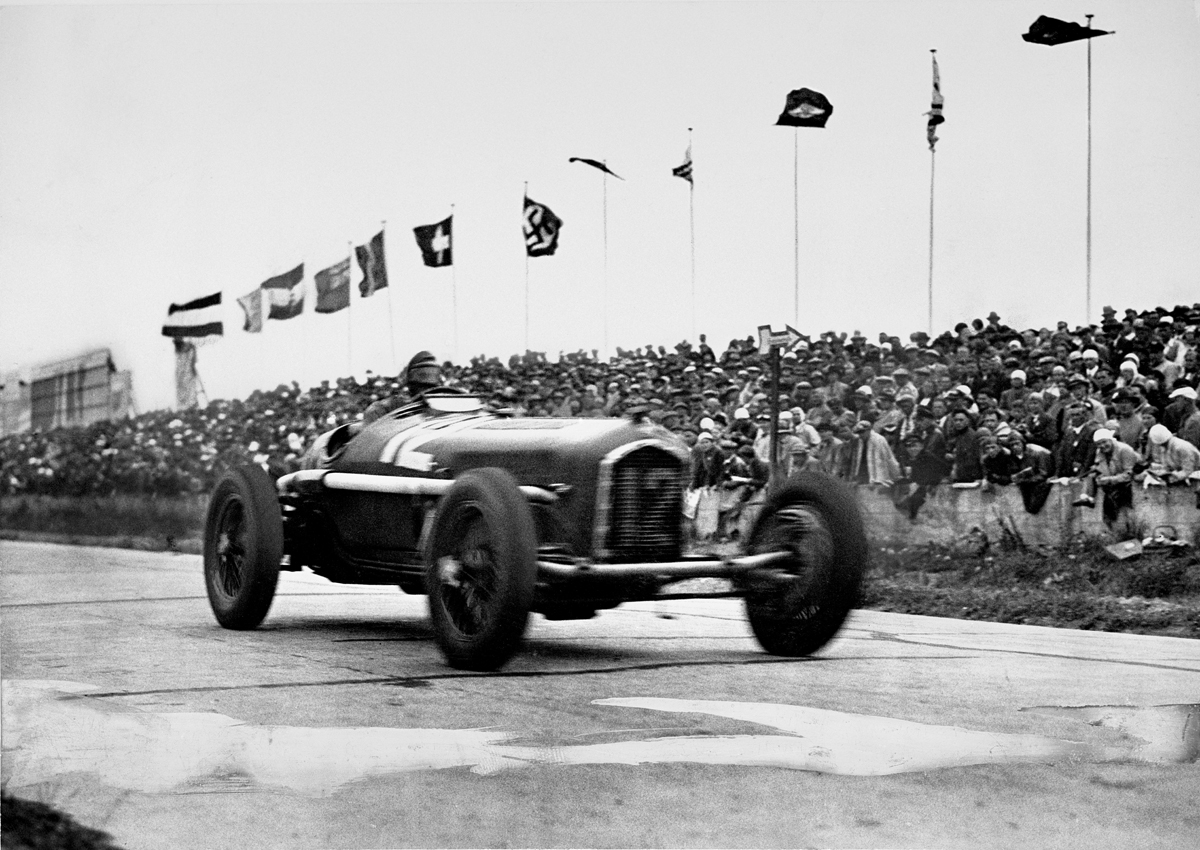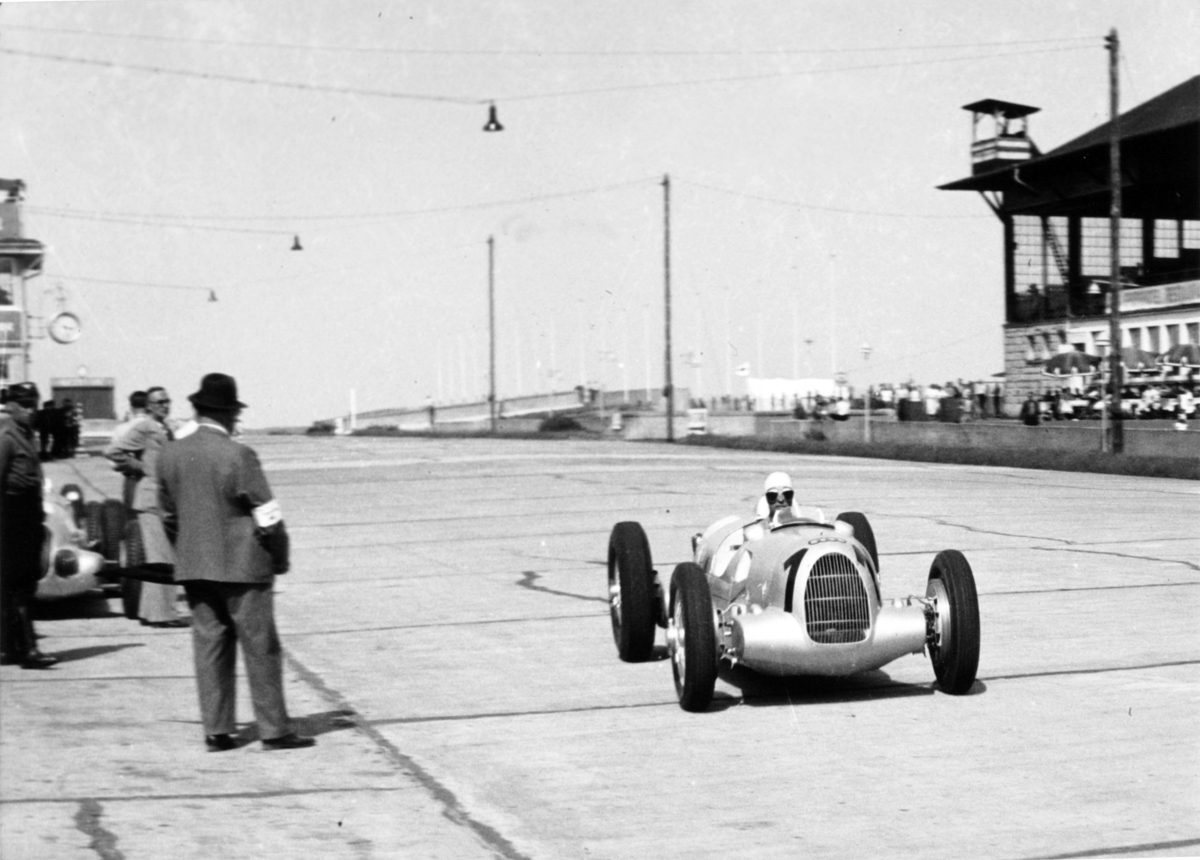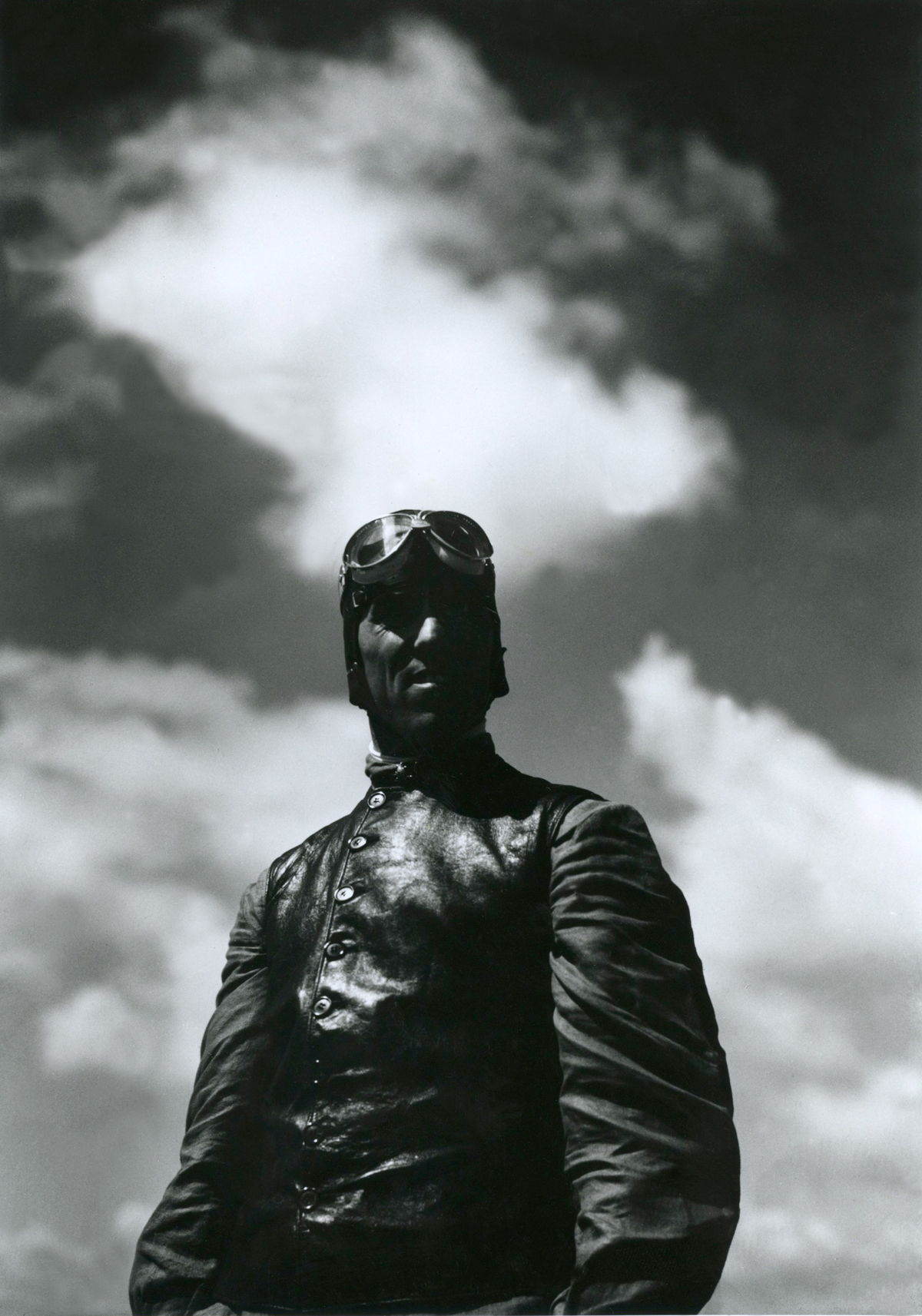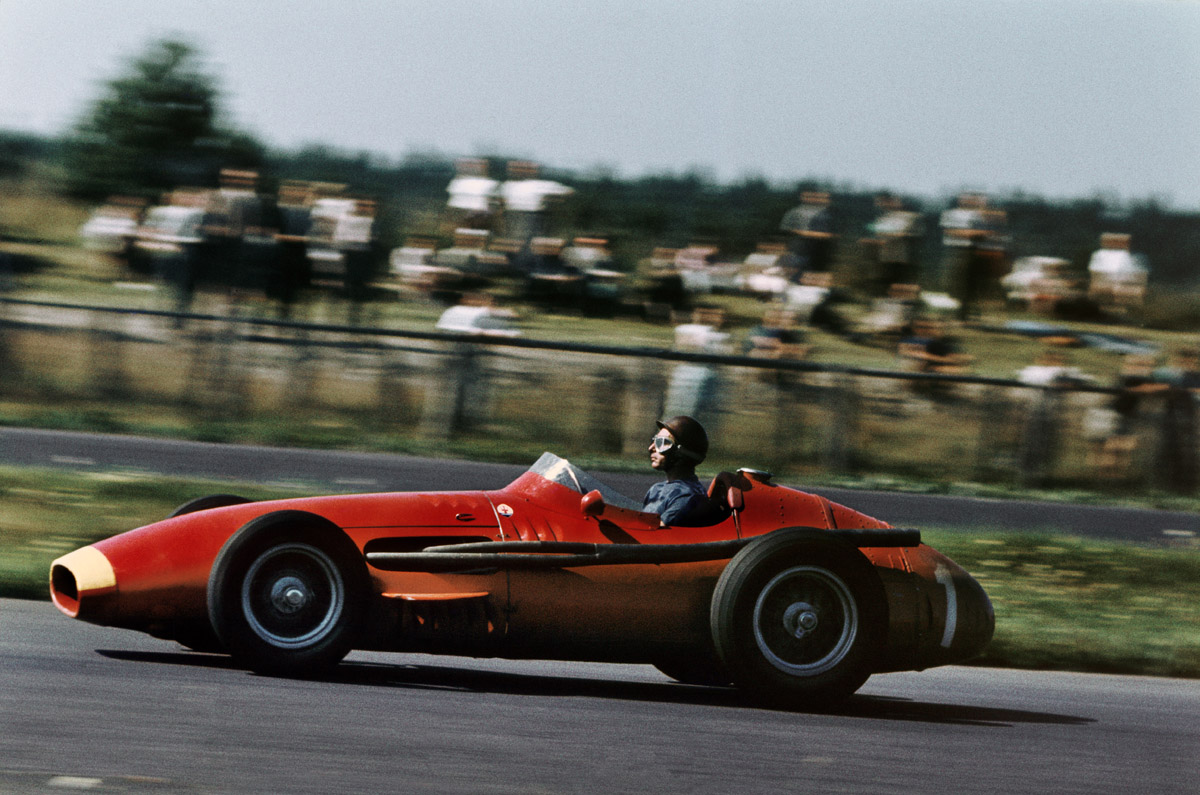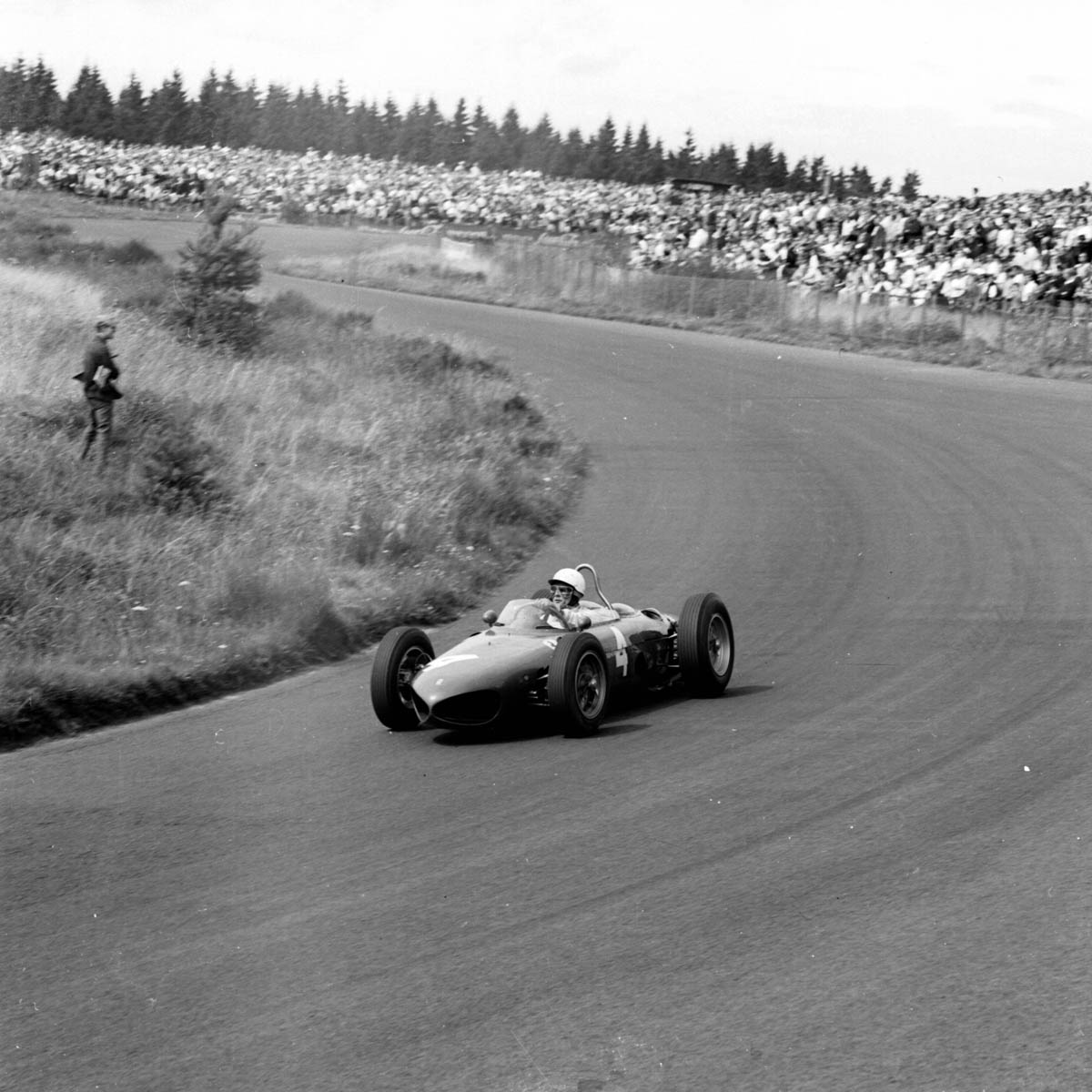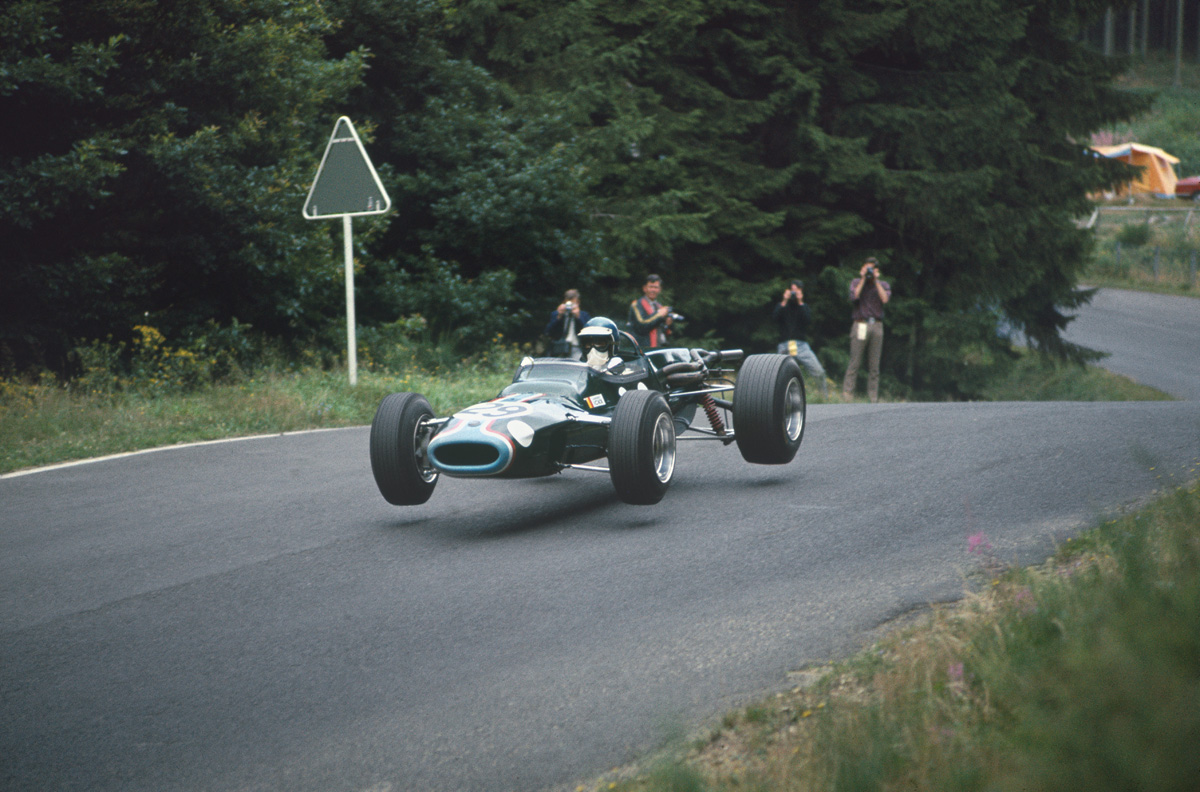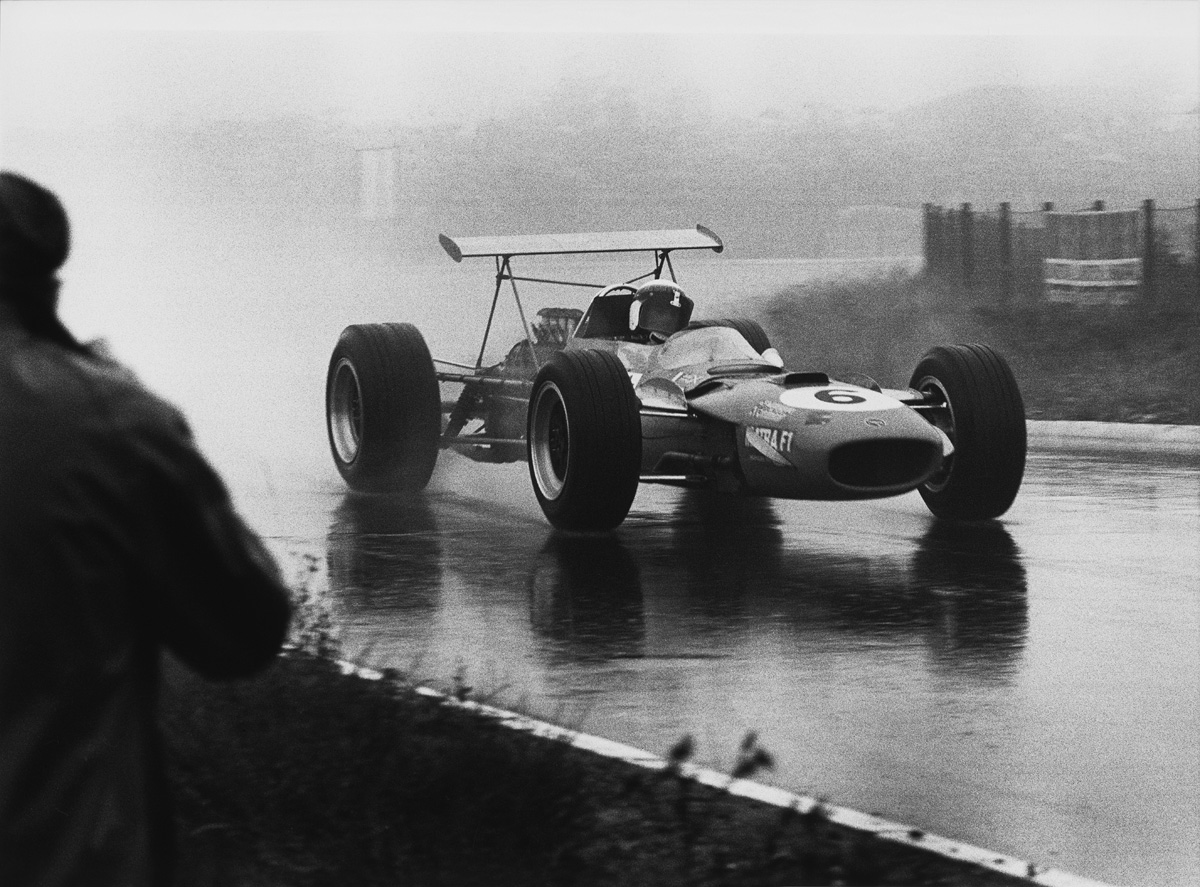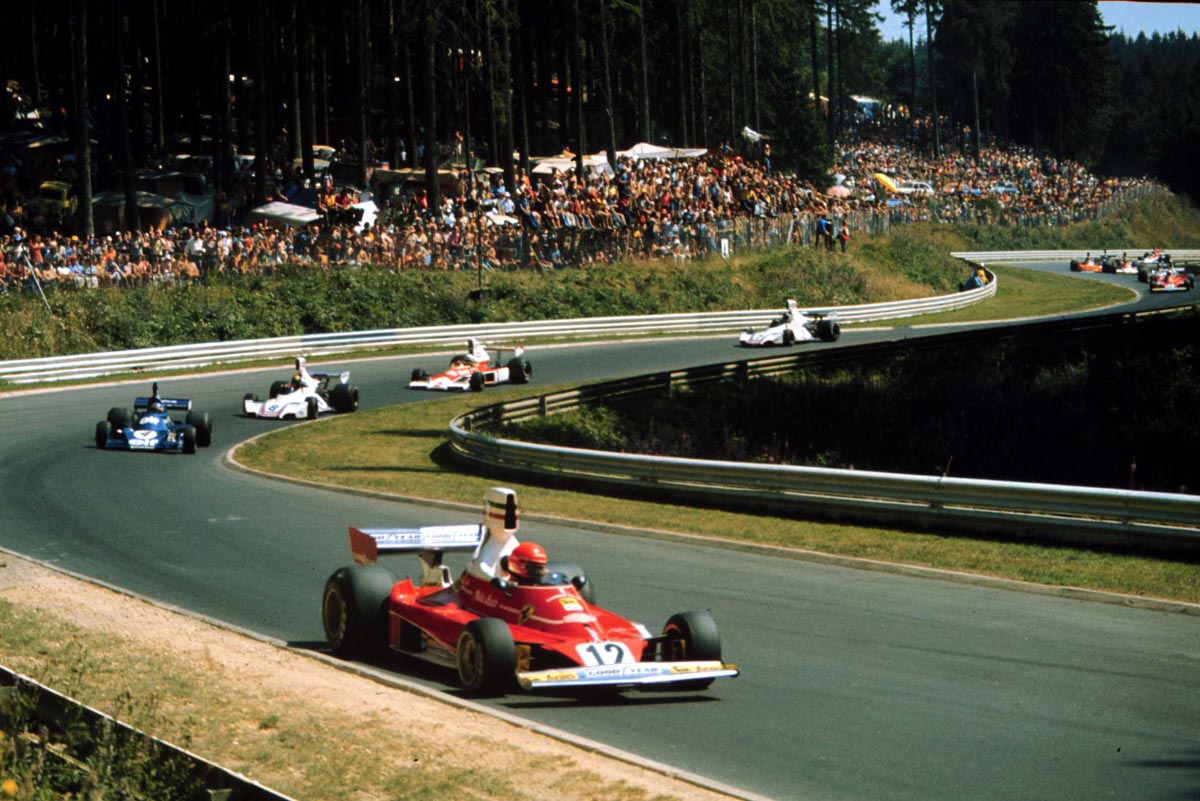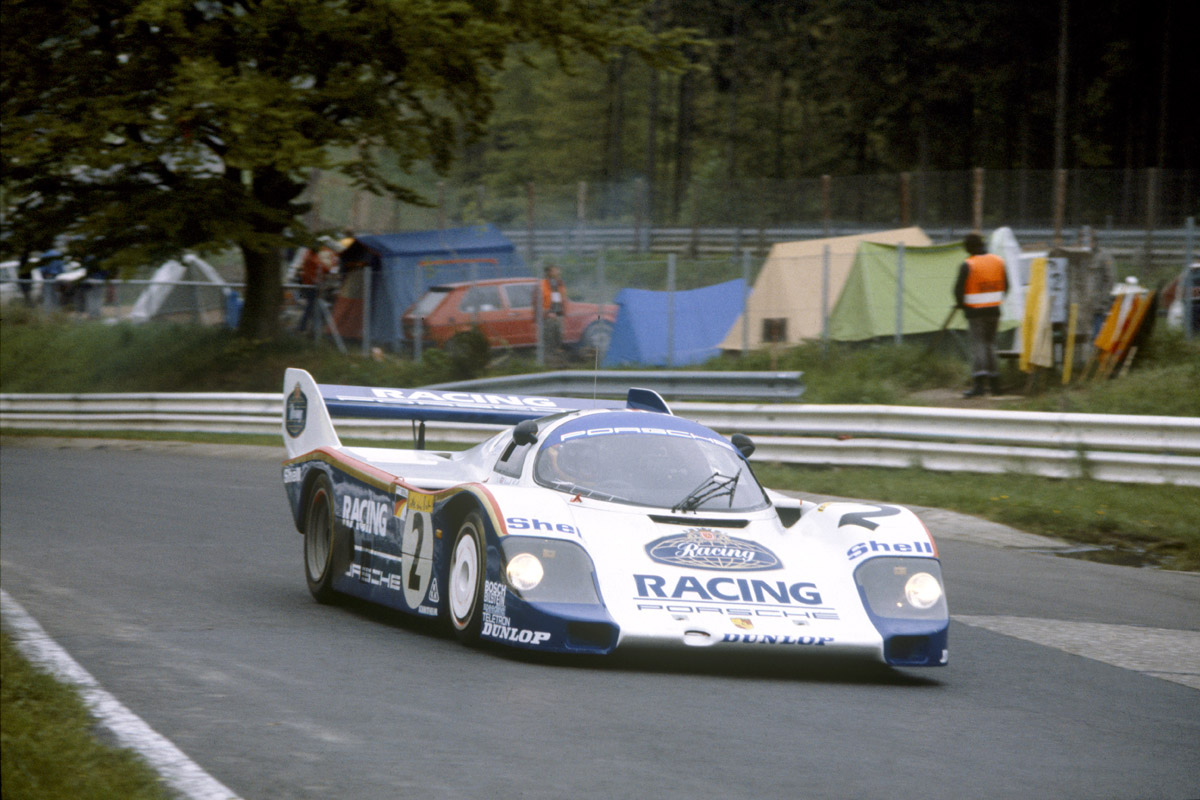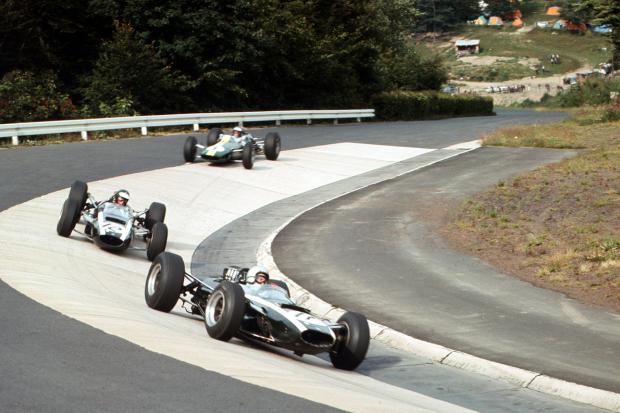
Throughout the 1920s, the Eifel mountains reverberated to the sounds of the ADAC Eifelrennen races, held on the twisting public roads of western Germany. However, it was less than ideal and organisers began construction of a dedicated circuit in 1925. By 1927, the works were complete, and one of the most demanding and fearsome racing circuits in the world was born.
The original track, which linked both Nordschleife and Sudschleife, was over 17 miles long. Dozens upon dozens of corners were almost impossible to memorise, with tight hairpins, kinks and blind crests proving a monumental challenge for drivers.
The circuit evolved as the decades rolled on, in an attempt to keep pace with the gathering safety campaign in motor sport. As the cars became quicker, so the stakes rose, until 1976 when Niki Lauda's catastrophic crash proved to be the last straw in terms of the Nordschleife as a Formula One venue.
Throughout the years, the world's most demanding track has produced some of the greatest racing highlights from the best drivers.
Here is a selection of the most historic moments to take place at the circuit.
Copyright LAT
Rudolf Caracciola celebrates his victory at the Nürburgring in 1931 with his mechanic, Wilhelm Sebastian. Despite being held in July, the race was blighted by torrential rain. 'Caratsch' was always good in the wet, and this win at the wheel of a Mercedes-Benz SSKL confirmed his status as the first 'Ringmeister'.
